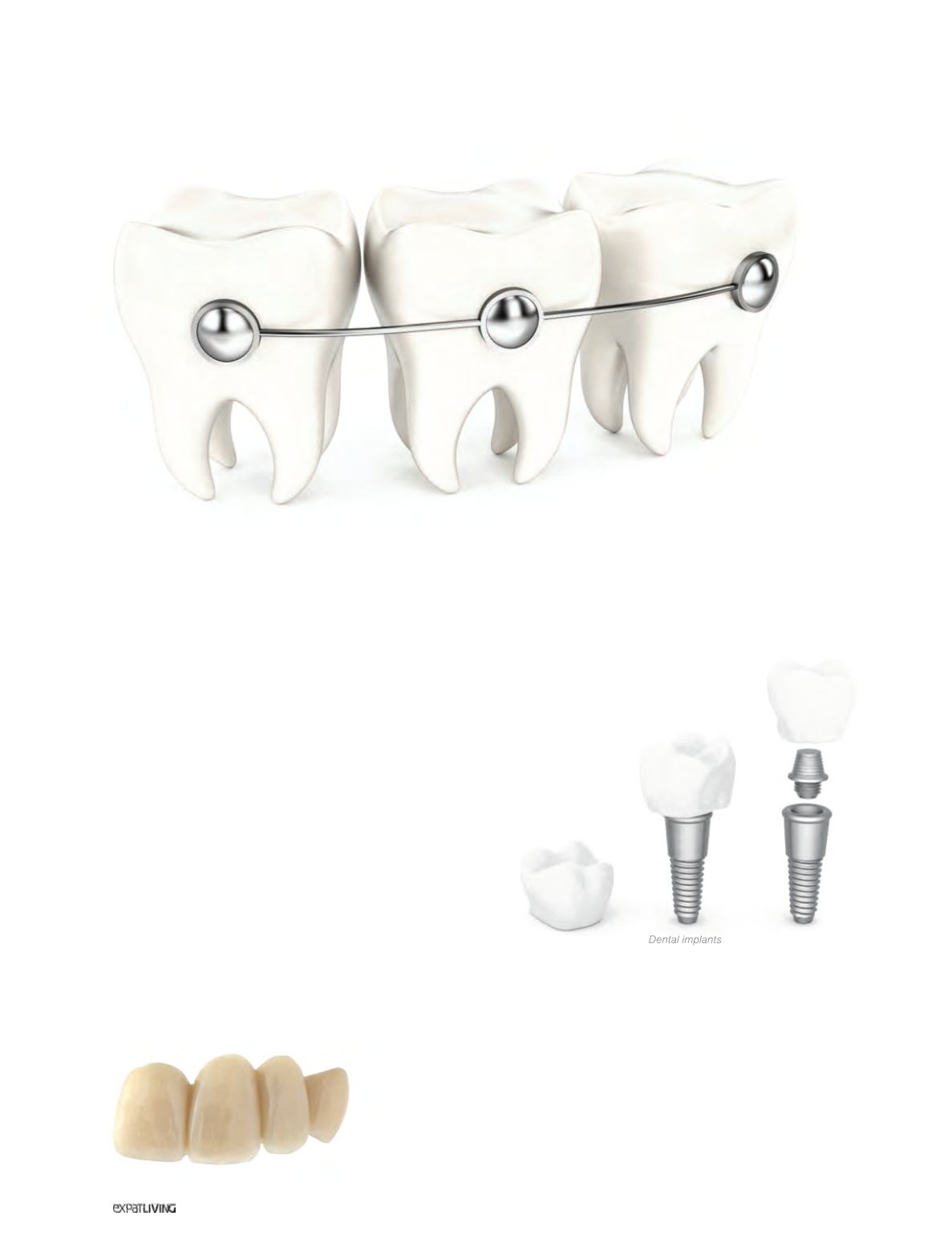

HEALTH&FITNESS
258
January15
For the grownups
In my late 30s, I asked my dentist to crown a few
of my teeth that were looking a little the worse for
wear, mostly because I kept on breaking my fillings.
He said he could, but advised me to first undergo
orthodontic treatment to correct my “bad bite” –
news to me, as no dentist had ever mentioned
such a thing.
“You were lucky he did that,” remarks maxillo-
facial surgeon DR TIAN-EE SEAH, another member
of the Orange Orthodontics team. “Otherwise, you
would probably have broken all your new crowns.”
I tell him too about my mother, who opted for
extractions whenever a tooth couldn’t be saved
and ended up in her seventies with dentures that
caused endless discomfort. Fortunately, attitudes
have changed, as Dr Seah agrees.
“Twenty years ago, we’d happily extract all the
teeth, not realising how that causes collapse in the
supporting bone.”
Apart from partial or full dentures, a number of
options exist for people who have lost teeth and
wish to replace them.
“Bridges used to be very popular: you shave
down two good teeth – just as you’d do for a crown;
then you take a mould and get it cast in porcelain
and metal. The problem is that it doesn’t feel quite
natural, it doesn’t look completely real, and as you
can’t floss properly, the teeth may be susceptible
to decay.”
Aleksvf , Contrail1, Igor Shmatov | Dreamstime.com
Dental implants
Incredibly, those Ancient Egyptians even had a go at dental implants:
some mummies have been found with grins sporting transplanted human
teeth; others, implants made of ivory. And 4,000-year-old remains from
Ancient China show bamboo pegs tapped into the roots to replace
missing teeth.
We’ve come a long way since then, agrees Dr Seah,
especially when it comes to materials. In an early 1950s
breakthrough, a Swedish researcher discovered that it
was almost impossible to remove a titanium implant from
bone; in 1965, he placed the first
titanium dental implant into a human
volunteer.
“Implants give you a second
chance at a tooth,” says Dr Seah.
“Four months after sinking the
titanium implant, once it has
integrated with the
bone, a crown
can be fashioned
on top and it will
look exactly like
a real, healthy,
attractive tooth.”
The ageing mouth
Where teeth have been missing for some time, the bone tends to shrink
or atrophy through lack of use. If it’s no longer wide enough or strong
enough to take an implant, a surgeon like Dr Seah can do a bone graft
from the chin or the lower jaw. “We do the graft, fix it with titanium micro-
screws and leave it for four months before doing the implant,” he explains.
You could avoid all that unnecessary trouble by asking for an implant
as soon as possible after losing a tooth; what’s more, teeth tend to drift
in an attempt to fill any gap, turning that hard-won “good bite” into a bad
one. Better late than never, though.
Dental bridge



















